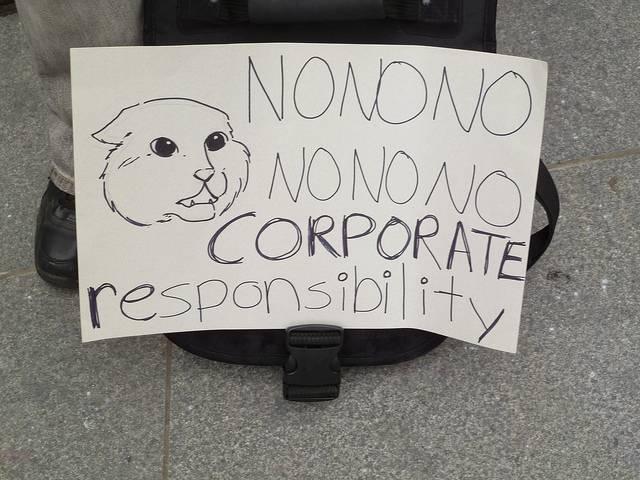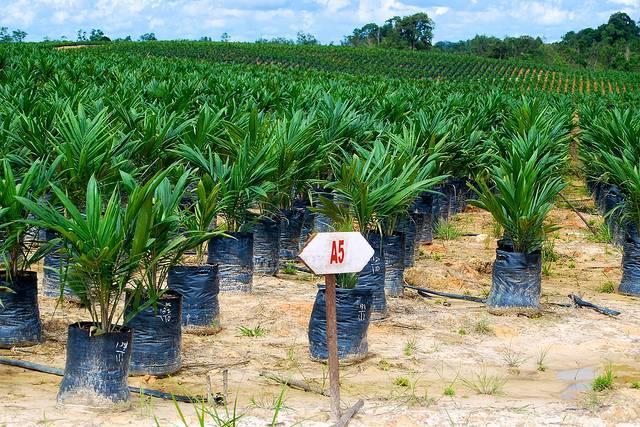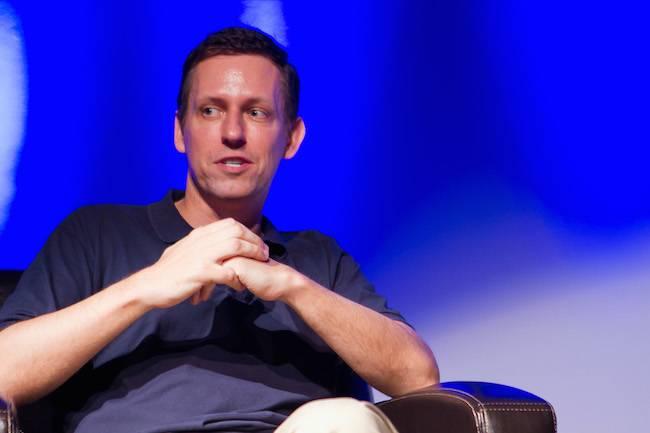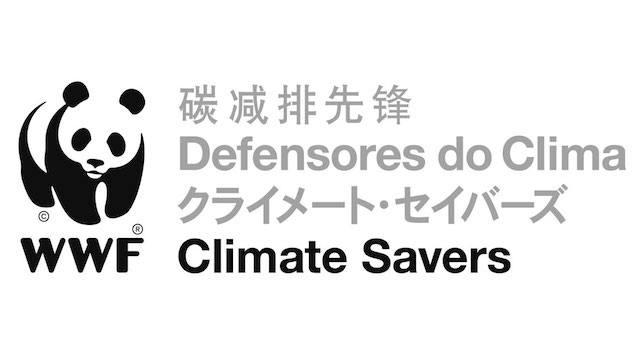Reframing Corporate Responsibility: The New Rules for the Trump Era


What makes a responsible company? How you define it? And how you differentiate a responsible company from an irresponsible one? These questions have always been difficult, but they are becoming even more challenging in the Donald Trump era.
As we enter a new era where nothing is taken for granted and almost every building block of our lives seem to be challenged, it is time to rethink corporate social responsibility (CSR) and what a responsible company is. Unfortunately, the old answers we gave to this question, as good as they may have been at the time, are no longer valid. What used to be considered responsible is just not good enough these days.
The best way perhaps to understand where we stand and what it means for corporate responsibility is to take a note from the world of resilience, which is defined by the Stockholm Resilience Center as “the capacity to deal with change and continue to develop.”
I want to add another concept, which I believe will be helpful to the conversation – systems state. The Resilience Alliance explains the terms in ‘Assessing resilience in social-ecological systems: Workbook for practitioners (Version 2.0)’:
“Systems can change over time and may eventually shift into a different system state. The term “system state” refers to a set of social and ecological variables that can fluctuate and create either stabilizing feedbacks that keep a system in a particular state (e.g., a clear lake) or amplifying feedbacks that push the system toward a new configuration and system state (e.g., a murky lake).”
I believe that the Trump era can accelerate some of the processes that already make our world more volatile, uncertain, complex and ambiguous (VUCA).
The concern is that this administration could transform us from the current “system state” to an alternate one that is far less desirable. It’s not that the current state is necessarily desirable, but we definitely don’t want to transition to a less desirable system. The authors of the Workbook for practitioners explain how this transition can happen:
“Often the transition between [system] states can be slow and gradual, but at other times it can be abrupt. Being aware of critical thresholds between system states can potentially provide advance warning of impending change as well as opportunities for preventing undesirable shifts in system states. In most cases, people become aware of thresholds only once they have been crossed and environmental benefits disappear, with no obvious way of returning to the way things were.”
I believe the critical thresholds between the current system and a less desirable one are the key here. These thresholds, both social and ecological, become more critical now than ever as it looks like every day provides a new challenge for them. If we want to avoid a decline to a less favorable system state, we need to protect these thresholds and make sure we don’t cross them.
Therefore, protecting the critical social and ecological thresholds of our current system should receive the highest priority. It should also be the litmus test for companies that want be considered responsible. Responsible companies will be the ones protecting these thresholds and generating stabilizing feedbacks that will help steady this rocking boat. Companies that don't will by default create amplifying feedbacks and hence should be perceived as irresponsible.
One can ask: What’s so new about it? Isn’t corporate responsibility already about taking into account social and ecological considerations when doing business? The reply is that while none of it is really new, the pressures we expect to see on the thresholds change the rules of the game. They require companies to take a clear stance on issues and the type of feedbacks they want to create.
Take for example the president’s immigration executive order (aka the travel ban), which gave a good example of the pressure on social thresholds in the Trump era.
The CEOs of companies like Starbucks, Lyft, Airbnb, Apple, Netflix and others provided an unequivocal response, making it clear they disagree with the executive order. In some cases, companies offered measures to support people who were directly impacted (Airbnb and Starbucks, for example) or financial support to organizations like the ACLU (Lyft).
Some CEOs responded more carefully. “'This executive order is one we do not support' became the language almost universally adopted by CEOs,” Andrew Ross Sorkin wrote in the New York Times on Monday. Others remained silent, likely not because they don’t have an opinion, but because they fear retaliation from the president or their customers.
So what about companies like Disney, PepsiCo, Walmart and others that didn’t release any public statement showing their disapproval of the executive action? Or companies like General Motors or IBM that released weak statements stopping short of showing their disagreement with the measure?
While these companies have many CSR credentials and were considered responsible to some degree or another up until now, I don’t think they should be called responsible anymore. It’s not that these companies have changed; it’s the context that has changed.
The Trump era requires clarity and commitment. Yes, this may be somewhat difficult" Corporate responsibility is at its core a manifestation of shades of grey due to the belief shared by many (myself included) that we won’t be able to achieve any progress by evaluating companies through ‘black or white’ criteria. After all, no company is 100 percent responsible, just like no company is 100 percent irresponsible. All companies are somewhere on that range with their activities and policies.
While companies will continue to land somewhere on this range, they will need to be tested against clearer criteria that assesses their actions and their words when it comes to critical thresholds. Only those that fully commit to protect these thresholds should have the right to be called responsible companies.
Our job now as citizens and stakeholders is to clarify to the business sector which social and ecological thresholds we prioritize and expect them to protect. It should be more like the 10 Commandments rather than the GRI standards to make sure companies understand what we demand from them -- and that we're paying attention to whether they meet our requirements or not.
Then the real job will be to make sure companies are held accountable. They must understand that the rules of corporate responsibility have changed in the Trump era, and they need to adjust accordingly -- whether they like it or not.
So what's the threshold you care most about in the Trump era? Feel free to leave a comment with the one you'd like to ensure companies protect.
Image credit: Flickr/badlyricpolice
CVS Health Pledges $10 Million for Women’s Heart Health


Heart disease is the No. 1 killer of women, according to the American Heart Association, causing an estimated 1 in 3 deaths. That amounts to approximately one woman every minute.
Despite the alarming statistics, the assumption that heart problems are more of a “man’s disease” is partly only 54 percent of women fully understand their risk, according to the U.S. Centers for Disease Control and Prevention. And almost two-thirds of women who suddenly die from heart disease reported no previous symptoms, the CDC says.
CVS Health says it wants to be part of the solution to raise awareness among women about heart health. The company announced that it will raise $10 million for cardiovascular research and education as part of American Heart Month over the next three years. Until the end of this month, CVS customers will be asked if they want to make a small donation when they check out as part of this campaign.
The discrepancy between how scientific research dollars are spent on men’s and women’s health problems are one reason why many women lack information on the risks they face from heart disease. Even though more women than men die from heart disease annually, a 2008 study showed that only 10 to 47 percent of the subject pools in 19 clinical trials focused on heart health.
The result is that many women face more heart risks, yet they often find themselves limited by a dearth of information. A report issued several years ago, for example, found that only 33 percent of women who suffered a heart attack underwent surgery, compared to 45 percent of men. That same report also revealed that women had a 44 percent higher chance of dying during heart replacement valve surgery over men.
Another challenge is that women often do not report any heart symptoms until much later in life compared to men – and women frequently have more unusual symptoms than their male counterparts.
Education, as well as offering women more ways to learn to be more attuned to their bodies, could be part of the solution. To that end, CVS Health says it is ready to offer free health screenings, along with other services, at more than 1,100 Minute Clinic locations on Tuesday, Feb. 14. That initiative is one way in which the company says it is making women’s health care more available and accessible – which is necessary at a time where the future of the Affordable Care Act is in doubt, the U.S. population continues to age, and it is becoming more difficult for patients to schedule appointments with primary healthcare providers.
“Many women do not realize that most regular cardiovascular screening tests should begin at age 20, and that knowing your personal health numbers helps you and your health care provider better determine your risk for developing future problems,” Angela Patterson, chief nurse practitioner officer at CVS Health’s MinuteClinic, told TriplePundit in an email.“By offering free heart health screenings at our MinuteClinic locations this Valentine’s Day, we can help women assess their heart health and make any necessary changes to their lifestyle to reduce their risk of heart disease and stroke.”
Patients need to be aware of the five factors that can combine to increase the risk of a heart attack or stroke: total cholesterol, HDL or “good” cholesterol, blood sugar, body mask index (BMI) and, of course, blood pressure.
On that last point, CVS and other retail chains could strive to make blood pressure monitors even more affordable and accessible. The cheapest one at CVS is $18. This is a small price to pay to gauge one of the first indicators that something could be amiss with one’s heart. But promoting their use and selling them at a lower cost would be one way in which to help women, and all patients, know more about how they can prevent a debilitating or even deadly heart condition.
Image credit: CVS Health
RSPO Touts Progress on Sustainable Palm Oil, But Critics Aren't Buying It


The Roundtable on Sustainable Palm Oil (RSPO) has been around for 13 years and claims that it is moving forward on boosting the world’s supply of sustainable palm oil.
Critics, however, say the organization and its guidelines have done little to stall deforestation across the world, especially within the two largest growers and suppliers of palm oil, Indonesia and Malaysia. As the Economist reported last year, no country on the planet has lost forests at a faster rate than Indonesia over the past century – and much of that can be attributed to palm oil plantations.
This week the RSPO issued its most recent impact report, which claims the industry has made “tremendous progress” on various fronts such as monitoring and grievances. Accomplishments the RSPO highlights for 2016 include:
- A 29 percent increase in membership over the previous year.
- 83 million hectares (10,900 square miles) of certified palm oil producing lands across 14 nations.
- 40 RSPO growers have phased out the toxic herbicide paraquat, with another 33 firms saying they are on target to ban this chemical’s use.
- Doubling of the number of certified independent smallholders.
- The closing of two-thirds of the labor grievances filed since 2009.
On that last point, those complaints that are now “closed” total 41 out of 63, or an average of nine per year. And that is only the start of why many NGOs say the RSPO is long on rhetoric but short on delivering results to make this industry far more responsible and sustainable.
For example, the RSPO boasts that its efforts led to a 10 percent increase in high conservation value area over 2015 figures. That sounds impressive, as that is the equivalent of 200,000 soccer fields spared from peatlands drainage, clear cutting, slash-and-burn, and other land-clearing methods. The problem, however, is that since the early 1990s, as many as 70,000 square miles (about 18 million hectares) of lands have been converted into palm oil plantations. Taking data from the Union of Concerned Scientists, that is almost 34 million soccer or football fields.
And that sobering statistic is just the start. 2016 continued to witness the ugly effects of the global palm oil industry.
It is plausible that fewer people died from forest fires and air pollution last year. And that's an improvement after estimates linked 100,000 deaths to the endemic forest fires across Indonesia in 2015. But critics say the lower incidence of forest fires can be attributed more to the fall rains that blanketed Indonesia than any decisive action.
And deforestation is continuing in even more remote areas of Indonesia, such as on the island of Papua. One of the more notorious companies, Korean-owned Korindo, says it has halted the development of lands on its concessions; the problem is that environmental and human rights NGOs have little cause to trust this and other companies because of their lack of transparency.
The RSPO is also making little headway when it comes to ethics traceability in the world’s palm oil supply chain. In this most recent report, the RSPO said the problem of child labor in palm oil fields makes it "clearer that much work needs to be done.”
The organization claims it is aligned with all and any goals to eradicate child labor, but many within the industry are not getting the memo: Last year Amnesty International accused RSPO member Wilmar (which controls at least 40 percent of the world’s palm oil trade) of numerous child labor and human rights violations (RSPO has since pointed out that Wilmar has taken steps to address those problems). Indofood, which has launched a joint venture with another RSPO member, PepsiCo, was also charged with turning a blind eye to child labor. The RSPO even admitted that it has done little to reach out to workers within the industry, including women, who often suffer the most from low-paid and even unpaid labor.
Add the fact that the RSPO has such little influence amongst its membership -- to the point that one of its founding members sued the organization after it was suspended over several allegations of abuse -- we have an industry that is heavy on words but has failed to prove that it is anywhere near to becoming a responsible industry.
Image credit: CIFOR/Flickr
How ‘Choice Theory’ Can Bring Harmony to Your Organization


By Meghdad Abbaszadegan
The American Institute of Stress reports the U.S. economy loses about $300 billion annually because of workplace stress. While some might think heavy workloads are responsible for much of that stress, a Danish study found unfair work environments and callous management attitudes are the chief causes of workplace depression.
Despite plenty of lip service about the importance of employee engagement, most corporate leaders do a terrible job of creating healthy workplaces. They try to control employee behavior rather than pay attention to what workers want, demanding respect without any effort to earn it. I’ve gleaned incredible insight from William Glasser’s Choice Theory, which helped me develop a better approach to leadership.
One of the core tenets of Choice Theory is that behavior is not separate from choice — we all choose how we behave at any moment. Likewise, we cannot control the behavior of anyone but ourselves. Glasser warns against relationships based on rigid controls and instead advocates for connections rooted in trust.
Rather than trying to control others’ behavior, Glasser suggests we develop seven caring habits: supporting, encouraging, listening, accepting, trusting, respecting and negotiating differences. These same qualities define the best managers, making a convincing case for why every executive could learn a few things from Choice Theory.
A different perspective
Glasser’s work differentiates itself from other management approaches because it can have a tangible effect on workplace quality and employee engagement. I’ve seen firsthand how powerful lessons from Choice Theory can be in the workplace.
Recently, a good friend of mine was struggling to get an employee to move to Phoenix. My friend wanted the employee to move because that’s where everyone else was located, but he was looking at the situation solely from his own perspective as a CEO. I saw an immediate parallel and introduced my friend to Glasser’s WDEP technique:
- What do you want?
- What direction are you going?
- Evaluate whether your actions are taking you in the right direction.
- Discuss, revise and refine your plan.
This paradigm shift allowed my friend to set aside his instincts to control the situation and instead understand the relocation issue from his hesitant employee’s perspective.
As I said earlier, other people can’t control us unless we allow them to. We always have a choice of how we feel, act and respond to situations. Managers certainly can use their authority to make an employee act — potential termination can be a significant motivator — but that employee still has the option to quit his job or not show up for work. Any action motivated by fear breeds unhappiness that has a way of worming its way through an entire organization.
My friend’s employee ultimately chose to move to Phoenix, and he felt genuinely enthusiastic about it rather than forced into something he didn’t want. How many managers can claim to accomplish goals without imposing their will?
Applying ‘theory’ to the workplace
Putting management theories into practice is notoriously tricky. It’s easy to see what you should do, but actually taking those steps is another matter entirely. Here are four ways Choice Theory can benefit any enterprise:
1. Stop being a boss. Start being a leader: Many leaders adopt a laissez-faire approach and only jump into action when problems emerge. Glasser draws a line in the sand between being “a boss” and what he terms a “lead manager.”
Lead managers persistently strive to create a non-coercive environment. By encouraging employees to self-evaluate, strive for greatness and talk through any trust issues, lead managers accomplish more with less prodding.
2. Understand your employees’ quality worlds: Glasser encourages managers to understand the "quality world" their employees occupy — the people they want to be with, the things they want to own or experience, and the concepts or belief systems that govern their behavior.
Hold a monthly meeting with employees to give them a chance to carefully consider the relationship of the company to their individual quality worlds. This simple step will help you foster engagement organically rather than through coercion.
3. Apply WDEP to solve problems: It’s easy to feel a compulsion to rush in and fix any problems that arise in a workplace, but you’re much better served to use WDEP to address underlying issues.
Encourage employees to think about what they want, what they are doing to achieve that goal, how they measure their progress, and whether they need to change their strategies in any way. This encourages employees to take ownership of problems and allows them to feel like important, empowered components of the organization.
4. Know your employees’ basic needs: Glasser claims every person has five basic needs that motivate all behavior: love and belonging, survival, power, freedom, and fun. Understand the substance of these needs, and use them as the foundation for a dynamic team.
For instance, pairing someone with a high need for survival with someone who has a high need for power can help both parties flourish naturally. Meanwhile, a team of two power-focused individuals can quickly dominate a workplace. Offer each employee an assessment of his needs to reveal the items that have a significant effect on his workplace performance.
The bottom line
If there’s any doubt that the concepts behind Choice Theory are needed in the workplace, consider a recent survey that showed a staggering disconnect in workplace communications. The study found that 84 percent of CEOs claim they never publicly reprimand employees, though 10 percent of employees and executives said they solely hear rebukes and recriminations.
Glasser has proven the way to close the gap is to inspire action rather than try to control outcomes. It’s a lesson we would all be wise to embrace.
Image credit: Pexels
Meghdad Abbaszadegan is an advisor with Coplex, a Los Angeles- and Phoenix-based startup studio focused on truly collaborative product design, development, and growth strategy. Coplex builds startups and digital products using lean and agile techniques. He is passionate about entrepreneurship, tennis, travel, and fostering connections between people. Follow Meghdad and Coplex on Twitter.
Deutsche Bank Says It Will Stop Funding New Coal Projects


The Paris climate talks in December 2015 were notable for the high level of private-sector participation. In addition to the 195 countries that promised some level of action to limit global temperature rise to 2 degrees Celsius, banks and other global financial institutions pledged hundreds of billions of dollars for investment in clean-energy and energy-efficiency technologies.
The problem for banks when they make such broad statements and promises is that they then must walk the walk. In the months following the conclusion of the COP21 talks, it turned out that many banks were still actively involved in the financing of fossil fuel projects.
Deutsche Bank, for example, was a global leader in coal-mining financing, with at least $6.7 billion committed to such projects worldwide. Promises that such investments were only “incremental” were not enough to mollify critics. Of course, many of Deutsche Bank’s decisions were based on business realities: In the U.S., the natural gas boom and a surge in the deployment of renewables led the German banking powerhouse to pull out of many U.S. coal projects last summer.
But this week, Deutsche Bank issued a statement saying it would no longer offer new financing for coal mining or coal-fired power plant projects. The bank also said it would “gradually reduce” its exposure to the coal industry around the world.
The terse statement comes at a time when other global financial institutions are coming under fire for trying to balance their commitments to fight climate change with the funding of conventional energy projects.
Case in point: The World Bank was called out by a Washington, D.C.-based NGO this week for its financing of oil, gas, and coal projects in developing countries at the expense of low-carbon alternatives such as solar and wind power.
The international lending agency vehemently denied that its investment decisions support any growth of coal, but the numbers make it difficult for the World Bank to counter the NGO’s assertions.
The growing chorus to halt the financing of fossil fuel projects, and to accelerate divestment from the sector, was growing louder even before the COP21 talks concluded 14 months ago.
The U.K.-based Guardian newspaper, for example, operates a long-running a #KeepItInTheGround campaign. NGOs echoed the alarm, and banks have been forced to respond in kind.
For example, Deutsche Bank put the kibosh on an Australian coal port project in May 2014 after protests from environmental groups over the lack of consensus on how such a facility would affect the Great Barrier Reef.
In the end, Deutsche Bank is appearing to heed its own advice.
The financial giant recently partnered with the University of Hamburg and reviewed over 2,000 studies related to corporate social responsibility (generally described as ESG, or environmental, social and governance, across the pond). The results found that there was a “non-negative” relationship between a commitment to corporate responsibility and corporate financial performance. In other words: More investors are actually seeking out responsible firms.
So while Deutsche Bank may suffer some losses in the near term due to its ongoing divorce from fossil fuels, the evidence suggests cutting the strings to the fossil fuel industry will not only score the bank more trust from its stakeholders, but more robust financial results far into the future as coal and oil deposits become stranded assets.
Image credit: Metropolico.org/Flickr
First Facebook, Now Lyft: Peter Thiel Undercuts Tech Companies' CSR Messages


It looks like the Donald Trump chickens are finally coming home to roost for Silicon Valley billionaire investor Peter Thiel.
The PayPal co-founder and Facebook board member is unique among the tech set for publicly supporting the Republican president during the campaign season, and that support continued. Barely two weeks into the new president's term, though, that relationship is already undercutting the messages of inclusion and tolerance that Thiel's high-profile affiliates are struggling to articulate.
TriplePundit has been following the Trump-Thiel relationship since last May, when Thiel emerged as an official delegate for Trump on the Republican slate. In addition to their lofty status in the business community, both men appear to share a disdain for journalism and an affinity for the white nationalist movement -- up to and including Trump's recently enacted "Muslim ban."
When is a ban not a ban?
This week TriplePundit contributor Reed Bundy made a compelling case that the corporate social responsibility trend has received a shot of adrenaline as a result of Trump's transparently anti-Muslim ban on entry to the U.S. from seven Muslim-majority countries:
"Despite the negative consequences of Trump’s executive order, we should celebrate the fact that so many giants in the tech industry are suddenly staunch advocates for refugees and our nation’s immigrant population," Bundy wrote on 3p."Not long ago, most CEOs opted to stay out of public political debate, usually so as not to upset or ostracize customers who may hold opposing views. Today, as corporate America grapples with the very real possibility of losing some of its most talented employees, the line between corporate social responsibility and political activism is suddenly blurred."
Companies that normally withhold public comment on politically-charged issues have suddenly become change agents, with Starbucks, Google and Lyft among the leaders.
In stark contrast to this burst of activity, earlier this week Peter Thiel issued the following brief statement about the Muslim ban through a spokesperson (as cited by Forbes):
"Peter doesn't support a religious test, and the administration has not imposed one," said Jeremiah Hall, a spokesman for Thiel.
That statement has been widely reported in traditional media as well as in tech-oriented news organizations.
Kara Swisher of Recode issued this particularly scathing observation:
"... Every time you open your mouth, you look more and more like you got played by Steve Bannon and his army of hobgoblins to the detriment of tech leaders whom you somehow got to bow and scrape to the new administration."
Swisher hammered home the point that Thiel has effectively linked Silicon Valley's finest to Trump and his anti-immigrant policies:
"It was bad enough that you pulled off that frightful kumbaya by trooping the most powerful people in Silicon Valley into Trump Tower for what amounted to a photo op for Trump..."Now worse, you have dragged your pals, like tech icon Elon Musk and Uber’s Travis Kalanick, onto the president’s advisory council, with the promise that engagement with Trump will give them the chance to change his mind."
Trouble for Facebook, Lyft and . . .
Underscoring both Bundy's and Swisher's points, Facebook founder and CEO Mark Zuckerberg was forced to defend Thiel's position on the company's board of directors last October, after employees raised alarms over his support of then-candidate Trump.
Even after the Muslim ban, Zuckerberg continued to mince words. In a widely circulated Facebook post, he diluted his concerns over the new policy by expressing optimism that Trump would do the right thing.
Mainstream media is beginning to draw attention to that relationship, and more.
In an article published on Tuesday, CNN's Seth Fiegerman drew attention to Thiel's investment in Lyft. The ride-sharing company has had a "banner week" in terms its response to the Muslim ban, including a $1 million pledge to the American Civil Liberties Union -- which was well-received by fans. However, Fiegerman shines the spotlight on Peter Thiel:
"Less noted, however, is the fact that Peter Thiel is one of Lyft's investors," Fiegerman wrote. "Thiel, the billionaire investor and PayPal (PYPL, Tech30) cofounder, is Trump's top tech advocate and an adviser on his transition team. He also recently appeared to defend the travel ban, despite the many concerns about it in Silicon Valley."
Do read the full article for more detail. Fiegerman cites a laundry list of other companies that have pushed back against the Muslim ban, but share financial or other business ties with Thiel.
In addition to Facebook, that includes Airbnb, Stripe, Artsy, Pando and the startup incubator Y Combinator, where Thiel is a partner.
Y Combinator is particularly noteworthy because venture capitalist Ellen Pao was among the few tech-sector A-listers to speak out publicly -- and with great force -- against Peter Thiel during the campaign season. Thiel's $1.25 million donation to the Trump campaign in the run-up to Election Day prompted her to cut ties between her organization, Project Include, and Y Combinator (emphasis in the original):
"... We are completely outraged to read about Thiel donating $1.25 million to Trump, 'apparently unfazed by the storm around the candidate in the last week following the broadcasting of lewd conversations.'
"While all of us believe in the ideas of free speech and open platforms, we draw a line here. We agree that people shouldn’t be fired for their political views, but this isn't a disagreement on tax policy, this is advocating hatred and violence."
Ironically, Y Combinator -- the force behind Uber and Dropbox, among others -- has just announced that it will provide financial support to the ACLU in its legal battle against the Trump administration on behalf of immigrants.
In a brief blog post on Tuesday, Y Combinator referred to ACLU's successful effort to block enforcement of the Muslim ban (at least partially) last weekend and issued a call for additional support:
"... The ACLU has always been important, but has a particularly important role right now," wrote Y Combinator. "We are honored to be able to help, and we will send some of our team to New York for the rest of the batch to assist."The ACLU will have full access to the Y Combinator network and community, and they will present at Demo Day in March.
"We are hopeful that the YC community will join us in supporting this important work. In particular, if you’re an engineer and want to spend some time helping them out, let us know. We’ll keep you updated on opportunities."
So, that could get interesting.
The ACLU-Y Combinator hookup is all the more interesting because another Peter Thiel connection -- the data mining company Palantir -- is beginning to raise flags about his potential role in the mass identification and deportation of immigrants in the U.S.
Adding to the irony, Thiel himself has immigrant status in two different countries.
He was born in Germany and brought to the U.S. at a very young age, and news has just emerged that he won special permission for citizenship in New Zealand back in 2011, though he didn't come close to meeting the standard five-year residency requirement.
Stay tuned for more.
Image credit: By Kenneth Yeung at PandoMonthly event via flickr.com, creative commons license.
11 Ways to Turn Entry-Level Millennials Into a Corporate Asset


By Gaurav Bhattacharya
A study released last year by Access Perks revealed that 74 percent of all American workers are satisfied with their jobs; but 66 percent of those people are still open to new employment.
Even though the market slump abridged salary hikes for many employees, net income is not the only motive behind employees choosing to stay in their current jobs. Many entry-level employees, especially millennials, consider job satisfaction just as important as salary.
With that in mind, try these 11 proven ways to turn entry-level employees into a corporate asset:
1. Offer a balanced professional and personal life
In today’s time, entry-level employees give a high priority to work-life balance. Non-financial benefits and flexible work arrangements are key factors that your prospective recruits look at. Millennials usually look for companies that devote time in building good boss and employee relations.
2. Use technology to unleash their potential
The Generation Y is known as the “Facebook generation” for a reason – their love for technology. So you’ll need to make sure you provide them a technologically sound work environment, and you’ll see how efficient they are! Their life doesn’t revolve around pen and paper. It consists more on clicks and screen taps.
3. Combine demanding and rewarding work
As much as the thought of easy work sounds pleasing to the mind, the truth is completely different. Unless a person gets to challenge his or her limits, and gets an opportunity to break through their comfort zone, work gradually becomes boring and uninspiring. As a result, productivity goes down. Employees become mentally stagnant, which is good neither for them nor for you.On the contrary, when you expose your newly hired millennials to more difficult and mentally challenging tasks, you’ll see how smartly and skillfully they engage into it. Millennials don’t want you to give them easy work; they like to take on a difficult job and find an easy, and time effective, way to do it. Millennials are smart; you’ve just got to hit the right chords.
4. Create a friendly and productive work environment
The key to engaging millennials is to motivate them, to lead by example and be friendly with them. As mentioned earlier, millennials like challenging environments, so you need to take them on tough roads and let them learn things on their own. Be there when they need any assistance, and lead by example.5. Provide opportunities to learn and grow
When we feel we are not learning anything new, we start feeling stagnant and get detached from the workplace. This is exactly why we always find new opportunities to learn something new and use this knowledge to grow as an employee.
Many companies have started conducting training programs in their offices, and Millennials are looking for such companies. Organizations that offer growth prospects, while providing educational programs relevant to their field, are preferred more. This will be especially beneficial for you. You won’t need to spend precious man hours in finding a new employee and training them. Your current young and energetic employees will be there for you, eager to learn and hone new talent.
6. Offer job security
Many organizations are notorious for hiring a candidate one day, and firing the next. If the newly hired Millennials do not feel secure about their job, they will prefer to walk out instead of getting chucked. Job security is a very important factor that can keep your employees motivated. Knowing their jobs are secure will make them want to come the next day.
7. Tell them ‘WIIFT’
People often ask: What’s in it for me? Tell them: What’s in it for them. That’s right. WIIFM! Even though people work for the company, they need to know how working for a company is making them grow on a personal level. There’s nothing more productive for a company than having employees who share the same vision, and have common goals as that of the company. But, that will only be possible when they see that a company’s benefit is also their benefit. For that, keep reminding them how they are benefiting from their job in a wholesome manner.
8. Make them feel valued
People want to work for places where they are appreciated; where their skills and performance are valued. Appreciation can come in any form. From a mention of their performance in front of the colleagues to sending an e-mail appreciating them performance; all these small yet meaningful gestures can go a long way in making people feel they are an indispensable part of the company.9. Convince them that they are not stuck in a dead-end job
One of the most hopeless situations in life is having the realization that the person is stuck in a dead-end job. Make sure your employees never feel that way. Make job-rotations a part of your work routine. Allow them to expand their horizon by trusting them with responsibilities that go above and beyond their everyday responsibilities.
10. Work to create a playful environment
If a company is able to create the kind of environment that feels like a playground, employees will not desperately want for the weekend to arrive. They could find an escape from their dreadful job. To do that, you can conduct regular gaming sessions and fun activities every now and then.A lot of research has been conducted that proves the long-term benefits of creating a playful environment in a company, and how it can help retain employees and turn them into an asset that want to stay dedicated and loyal.
11. Ask for regular feedback and act on it
A place where people are heard and their views are appreciated is something that employees are actively looking for these days. Ask for regular feedbacks from employees and convince them that their opinions matter. Do not impose rules on them. Always keep them flexible. Allow everyone, especially entry-level millennials to put forth their honest views and feedback. Do take their thoughts into consideration if you feel there’s room for improvement in company policies and be sure to act on it.
To make your entry-level millennials your best asset, you’ll need to make them realize how they are a good fit, and how you are always by their side. Guide them, motivate them and help them whenever needed. But above all, give them a platform to grow.
How long have you been working for your company? What is it that motivates you to continue working for it? What steps do you think companies can take to make employees feel important and turn them into a valuable asset? Do let us know!
Image credit: Pexels
Gaurav is the CEO and co-founder of Involve which is a software as a service platform to help companies and its employees give back to their favorite causes by creating personalized giving and volunteering opportunities. He actively participates in the LA tech innovation ecosystem through panel discussions and mentoring. Gaurav started his career by starting a medical software business while still in high school and is an accomplished technology leader with 6 years of team and program leadership with PwC, Montgomery County & Cymer. When he’s not working with the tech community, Gaurav enjoys volunteering for local events with his team. You can follow Involve on Facebook, Twitter and LinkedIn.
'Climate Saving' Companies Build a Framework for Progress


A roadmap and a call to action
WWF launched the Climate Savers Program in 1999 as a platform for corporate leadership in climate action. Partnering with leading companies within their sectors, Climate Savers guides and supports these leaders as they develop effective climate action plans.
Now collaborating with more than 30 companies worldwide across a broad spectrum of industrial and corporate sectors, this unique partnership promotes business-smart best practices that others can follow.
This process has evolved since its inception. Through active participation from all stakeholders, Climate Savers, the Carbon Disclosure Project, and global businesses now have a framework to meet the challenge of capping global temperature rise to 2 degrees Celsius, what scientists say is a crucial red line.
The journey toward a low-carbon economy has been long, difficult and circuitous. We are now at an inflection point of bold transformation for business and future business leaders. To understand where we are now and what lies ahead, let's first briefly review where we've been.
Unraveling the context of climate change action
The writing was on the wall back in 1999 and even a decade or more before then. Indeed, conservation was an issue of national concern in the United States by the turn of the 20th century and the presidency of Teddy Roosevelt. But it would take some time for the planetary scale of the impact of industrialization to take root.
With the release of the Brundtland Report in 1987, Our Common Future, the idea of sustainable development entered fully into global awareness. After nearly a half-century of astronomical growth, the human enterprise faced the possibility of limits.
By the time of the Brundtland Report, many sectors had made significant progress cleaning up their act. And many local issues of chronic pollution were being addressed through regulation, improved processes and increased resource efficiency. America had cleaner air and clearer water, our companies released fewer toxins per unit of production.
Whether pushed into it by regulation or pulled in by sincere corporate citizenship, business engagement drove real change with these issues. Fouling the local environment was increasingly uncool -- and bad for the bottom line. Responsible businesses took environmental issues seriously. They developed industry-wide best practices for pollution control, cleaning up rivers and lakes, and reducing vehicle emissions.
A year following the Brundtland Report, Dr. James Hansen testified before Congress on the mounting evidence supporting human-caused climate change. Hansen brought attention to a global-scale problem just as some economists argued economies were becoming hyper-globalized.
What Hansen and others described was at a scale almost beyond human perception. But it would only get worse, Hansen warned, and fixing it would require a collaborative human effort to match that scale.
Turning theory into practice
As the '90s drew to a close, with the Kyoto Protocol adopted by the U.N. Framework Convention on Climate Change at COP3, the debate on climate policy and the economic cost-benefit of action was well underway.
Even as many businesses pushed back against the nascent call for climate action, business leaders knew that they’d have to address global warming, one way or another. But there was no set playbook on how to go about doing it.
Under the tutelage of Joe Romm and Rebecca Eaton, WWF moved to fill the gap by creating Climate Savers.
The first two companies to come onboard were Johnson & Johnson and IBM, soon followed by Nike and Polaroid. Leaders in their respective industries, these four companies agreed to work with Climate Savers to help develop internal emissions reduction and energy efficiency targets.

Leaders of the pack
Leverage is a central component of Climate Savers’ mission. Instead of a “shotgun” approach, Climate Savers works with “climate leaders,” allowing their example to inform and inspire their peers.
“We have tried to pick a winner in each sector that can set a new standard in that industry,” Matt Banks, program director for WWF Climate Savers, told TriplePundit. “Our goal has never been to partner with (a lot of) companies within each industry, just one or two within that sector."
“The idea is to create a best-in-class example and a climate change action plan that can motivate others in that industry.”
Through this leveraged approach, Climate Savers and its first partners laid the groundwork for establishing best practices that turn the theory of climate action into on-the-ground practice.
Experience teaches lessons. The cumulative experience informs the evolution of Climate Savers partners' best practices to the benefit of other companies looking to start their own journies.
"We are looking for companies that are on a journey and ready to take on this issue," Banks said, "regardless of whether their target is set or they need help setting it … Depending on where they are in the journey, we’ll work with the company to develop a good plan that others can model."
Over time climate action plan best practices become "more mainstream," says Banks. The program now has the analysis showing specific action steps and expected sector-wide ROI for implementing climate action plans.
The 3 Percent Solution
Developed with the CDP, the 3 Percent Solution initiative combines measurable science-based targets with established best practices to put plans into action.
The 3 Percent report is built upon rigorous analysis by several of the world’s leading consulting firms, namely McKinsey & Co., Point380 and Deloitte LLP. It's the "roadmap," Banks explained, for a 2-degree pathway.
"If all of the non-utility part of the economy reduced at a rate of 3 percent per year," Banks said, "we would exceed what the science is calling for, deliver of 1 billion tons of emissions reductions, and save over $780 billion across the economy."
By reducing annual carbon equivalent emissions by 1.2 gigatons by 2020 below 2010 levels, the U.S. corporate sector can significantly reduce the risk of catastrophic climate change, cut costs, and uncover new investment opportunities.
Science-based targets
"In the beginning, all you had to do was work with us to set a target," Banks explained. "That target was based on what the company thought it could do. Since that time, we've learned a lot more about what the opportunities are around targets."
"There are a lot of common variables that allow companies to set science-based targets," Banks told us.
The rollout of the 3 Percent Solution motivated WWF to launch the Science Based Targets Initiative. In partnership with CDP, the World Resources Institute (WRI) and the U.N. Global Compact, the initiative defines a target as science-based if it is in line with the 2-degree pathway. The goal is to bring a "critical mass" by institutionalizing adoption of science-based targets across the economy.
Adoption of science-based targets led Climate Savers to further reform their criteria for participation, Banks explained.
"In order to (participate), you need a science-based target," Banks said, "and plan for responsible policy engagement," (or how you plan on becoming a "corporate magnifier").
Once a company joins Climate Savers, they focus on renewable energy, deforestation, net positive operations and supply chain efficiency. These six parameters are the main topics for annual review at each international Climate Savers Summit.
Along with the more than 30 partner companies in the Climate Savers program, there are now more than 200 companies committed to implementing science-based targets. Whether an official Climate Saver or not, many more companies are committed to the overall goals set forth in the 2015 Paris climate agreement.
The road from the Brundtland Report to the 3 Percent Solution and science-based targets has been long and difficult. We have known for some time what we need to do. Through the hard work of many leading businesses, WWF Climate Savers, CDP and others, we now have the means to do it.
Nonetheless, depending on who you talk to, the chances of humanity "hitting the 2-degree target" range from fantastical to still doable, if barely.
The opportunity to lead
Here’s the rub, especially for businesses in the U.S. Until at least 2020, leadership on climate or energy policy from Washington is an open question at best. That could change. It's a fool's errand to try to predict the direction of U.S. policy over the next four years. What is clear is that now is the time for business to lead.
With each passing decade, the cost of climate action goes up, and the odds of avoiding the worst impact declines. 2020 looms a few short years away, marking another opportunity lost if we do nothing now. Business and consumers must set the agenda for reducing carbon emissions, producing more energy efficient products, and building the infrastructure for a 21st-century, low-carbon economy.
Not only is it doable, but it's also profitable.
“In the beginning, it was a lot of knocking on doors,” Banks recalled. Those days are gone. Climate Savers turns business leaders into climate heroes.
A 2015 article in the journal Nature argues that meeting the 2-degree target set forth in Paris is still doable, "but only with heroic efforts."
And who doesn't want to be a hero?
Image credits: Pexels and WWF
Editor's Note: This post was updated on Feb. 2, 2017, to clarify McKinsey & Co.'s participation in developing the 3 Percent Solution report.
Report: EVs and Solar Will Displace Oil and Coal By 2020


Will the Trump presidency and stubbornly low fossil fuel prices stall or even reverse the growth of renewables? Not according to a joint study released today by Carbon Tracker and the Grantham Institute of Imperial London College.
According to their researchers, the double-whammy of falling of electric vehicle costs plus rapidly falling solar power prices could slow the world’s demand for both oil and coal after 2020.
Such a scenario is in sharp contrast to the forecasts of energy companies such as ExxonMobil. In its most recent energy outlook report, the world’s largest energy company has projected oil to provide about one-third of the globe’s energy needs by 2040. Natural gas, coal and nuclear will provide just over half of the world’s energy needs; renewables such as wind and solar, insists ExxonMobil, will only contribute 4 percent to the planet’s energy portfolio (others, such as hydro, comprise 7 percent of the company’s 2040 forecast).
The problem with the forecasts of ExxonMobil and those derived by other energy analysts, claims the Carbon Tracker and Grantham Institute joint study, is that their conclusions are based on business-as-usual (BAU) scenarios.
Conventional energy studies generally omit cost projections of renewables such as photovoltaic (PV) solar and electric vehicle technologies. They also do not consider the nationally determined contributions (NDCs) to which countries committed at the 2015 Paris climate talks. (The study, however, does not account for what could happen if the global populism wave leads countries to amend or eliminate their climate change goals.)
The Grantham Institute’s researchers' modeling looks at the extraction costs of fossil fuels while evaluating projected efficiency and prices of solar power. The researchers also examined four possible climate policy scenarios, as well as projections for future energy consumption.
This approach is in contrast to other energy forecasts -- which generally use a baseline case assuming future trends can be based on past performance, while ignoring any potential changes in climate- or energy-related policies.
Hence, according to this study, fossil fuels will see a bleaker future than those suggested by the likes of ExxonMobil.
The combination of falling PV and battery costs could plunge coal’s contribution to the world’s energy mix to 8 percent – less than half of ExxonMobil’s forecast. By 2050, coal would practically disappear as a measurable source of energy, the researchers concluded.
Meanwhile, solar could generate anywhere from 16 to 28 percent of the world’s power needs by 2040, and as much as 29 percent by 2050. The study does not account for any solar subsidies (which are on the retreat worldwide anyway), meaning this source of power could score an even higher market share than suggested.
Meanwhile, as solar power grows, so will the expansion of electric vehicles worldwide. The study points to the cost of battery power, which has fallen from $1,000 per kilowatt-hour in 2008 to $268 per kWh in 2015.
The continued declining price of battery power, which could fall to $100 per kWh by 2020, along with declining capital costs necessary for manufacturing and improving batteries, leads the Grantham Institute and Carbon Tracker to make a bold prediction: Electric vehicle power trains could reach cost parity with those of internal combustion engines by the beginning of next decade.
Add the potential for these vehicles to have a range of anywhere from 200 to even 300 miles per charge, and consumer acceptance could lead to the largest transformation in the automobile industry since Henry Ford launched his company's first assembly line.
The results, this study’s authors infer, should be a warning to energy companies and investors. As the world transitions even more rapidly to a low-carbon economy, growing acceptance of electric vehicles could leave 2 million barrels of oil per day (MBD) stranded by 2025; that number could surge to 16 million MBD by 2040.
These conclusions should hardly be surprising. Carbon Tracker urges energy companies to look beyond their business-as-usual strategies, become part of the global decarbonizing trend, and even start investing in clean energy and electric vehicle technologies.
Investors should demand that these same energy companies adjust how they disclose their long-term forecasts. And regulators should update disclosure rules to ensure energy companies reveal a more accurate perspective of the long-term risks (and potential benefits, if energy firms acknowledge the data by organizations such as Carbon Tracker) involved with investing in this evolving industry.
Image credit: Leon Kaye
Plans to Sell 3.4 Million Acres of Federal Lands Spur Protests


If House Republicans can gain the support of the Senate and score Donald Trump’s signature, at least 3.4 million acres of publicly-owned land could be sold off in the next few years.
That is the intent behind H.R. 621, a bill submitted last week by Rep. Jason Chaffetz of Utah. Called the Disposal of Excess Federal Lands Act of 2017, the proposed law would allow these public lands to be sold at a “fair market value as determined by an independent appraiser” in order to reduce the federal government’s debt.
The bill would affect lands in 10 western and central U.S. states: Arizona, Colorado, Idaho, Montana, Nebraska, Nevada, New Mexico, Oregon, Utah and Wyoming.
Chaffetz claims the amount of acreage for sale is a sliver of the Bureau of Land Management’s total landholdings, which amount to 958 million acres.
Environmental NGOs, associations of recreational hunters and fishermen, and state and local governments – which would supposedly benefit from the policy -- are not having it.
Denigrating these lands as “disposable” is only the start of the growing outrage. The Wilderness Society, for example, accused the Trump administration and House Republicans of going against the wishes of many Americans, and says such a sale could have a negative impact on local economies.
Bristling at Chaffetz’s assertion that these lands are “worthless” to American taxpayers, the Wilderness Society’s senior government relations director pulled no punches.
“What’s worthless to allies of the fossil fuel industry for all except oil and gas extraction has irreplaceable value to the American people for hiking, hunting, camping, fishing, and countless other pastimes that Teddy Roosevelt first acknowledged were central to the strength and well-being of this nation,” Alan Rowsome of the Wilderness Society said in a public statement.
“Today, those outdoor pastimes have a $646 billion value and contribute millions of American jobs to rural communities without harming the lands and waters themselves.”
Chaffetz’s bill is the first of a one-two punch to eliminate the Bureau of Land Management’s (BLM) oversight of federally-owned lands. On the same day he submitted H.R. 621, the Utah Republican introduced another bill that would eliminate any law enforcement functions from the BLM and the National Forestry Service.
The bills sparked protests across the country as hunters, anglers and outdoorsmen -- and women -- spoke out against any potential sale.
In Helena, Montana, over 1,000 citizens attended a rally in the state’s capitol building. Gov. Steve Bullock told the crowd: “This ain’t about politics, whether you’re a Democrat, or Republican, or Libertarian, or vegetarian, these lands belong to you. They’re our heritage. They’re our economy. They’re our quality of life. Jeopardizing what it means to be a Montanan and transferring those lands is wrong-headed.”
Chaffetz claims the lands deemed as disposable are based on conclusions made almost 20 years ago by the Department of the Interior during the Bill Clinton administration. But in the letter addressed to the then-House committee chair overseeing resources management, the Interior Department official noted: “Many lands identified appear to have conflicts which my preclude them from being considered for disposal or exchange.” Those conflicts include “critical natural or cultural resources,” he said.
Those who love the outdoors took issue with Chaffetz’s assessment of these public lands’ value. In an interview with the Guardian, Jason Amaro, representing the Arizona chapter of the Backcountry Hunters and Anglers (BHA), described the pending legislation as a “land grab,” and pointed out the audacity of politicians who tout local control but in fact have asked for little local input as this bill was drafted.
The BHA’s national president and CEO, Land Tawney, has already been critical of what he describes as the 115th Congress’ hostility to public lands. “Some of our elected officials are wasting no time in paving the way to steal our outdoor heritage,” Tawny said earlier this month. “If it’s a fight they want, they’ve got one coming – and I’m betting on public lands hunters and anglers.” Tawney promised a “hornet’s nest” on a Facebook Live post if this bill progresses in Congress.
Even the testosterone-laden Men’s Journal ridiculed the bill. “It’s clear that some of this ‘disposable land’ is far from worthless,” wrote staffer Ryan Krogh, “especially for hunters, anglers, hikers and bikers.”
The bill may also have an ally in presumed Interior Secretary Ryan Zinke, now a U.S. Representative for Montana.
On one hand, Zinke has worried environmentalists with his call to open more BLM lands to energy development. But during his confirmation hearings last month, Zinke was on the record saying he opposed any sales or transfers of public lands to private interests or U.S. states.
Image credit: Ken Lund/Flickr